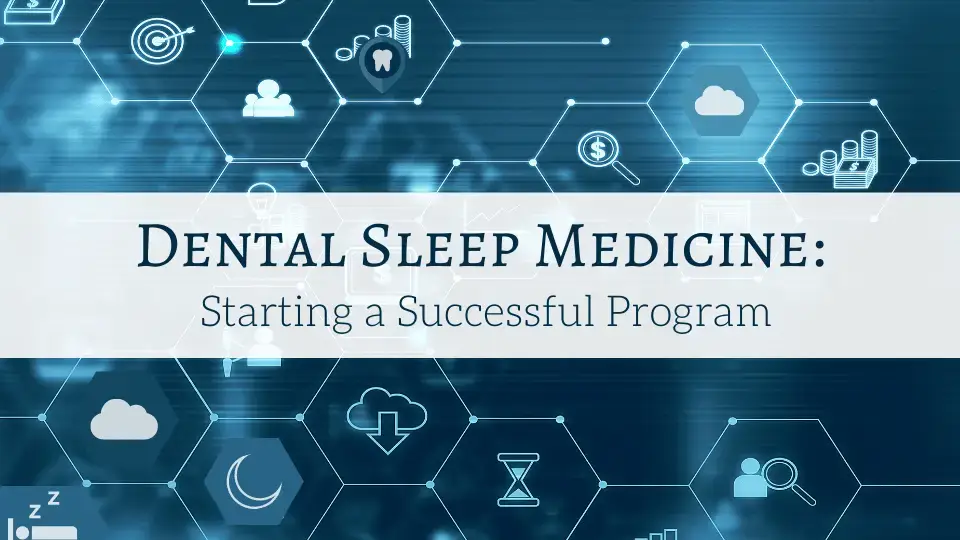Dental sleep medicine (DSM) is a rapidly growing field in dentistry. Implementing DSM in your dental practice can seem overwhelming, but with education and planning, you can incorporate a valuable service to your patients and increase your bottom line. The lack of education and necessary operational procedures are the primary reasons offices fail to implement DSM into their practice. It is imperative to understand the basics of what is necessary to get paid, including the DSM business structure, diagnostic process, insurance participation, and how to handle Medicare.
The DSM business structure is an essential consideration when incorporating DSM into your practice. You need to decide whether to be fee-for-service or participate in insurance plans. While being fee-for-service has the benefit of full fees paid upfront, the downside may include poor case acceptance and potentially upset patients if prior authorization is needed for claim reimbursement and is not obtained. Insurance participation can enhance case acceptance; however, it may lessen your reimbursement allowance. Being a non-participating provider may also be an option. It may increase patient out-of-pocket expenses with higher deductibles and co-insurance, resulting in poor case acceptance. However, there are ways to profit when accepting insurances, even with low fee allowances.
Medicare is another important topic to consider when incorporating DSM into your practice. Medicare does not cover basic or restorative dental services, so this decision will not affect your restorative practice. Suppose you decide not to enroll as a Medicare provider. In that case, you still have responsibilities regarding Medicare that you must disclose to the patient before providing oral appliance services. You must advise the patient that they may have coverage in part or in full, depending on their supplemental coverage and the plan they have, if they see a Medicare-enrolled supplier. Obtaining a signed, private contract explaining this and keeping it on file is also essential.
You have three options for Medicare enrollment: do nothing, become a participating durable medical equipment (DME) supplier, or enroll as a non-participating DME supplier. Becoming a participating DME supplier will greatly increase case acceptance; however, you are bound by your jurisdiction’s limiting allowance, and you may not balance bill the fee for the appliance. Enrolling as a non-participating DME supplier gives you the most flexibility, meaning you could accept assignment if you chose on a per-case basis. Should you choose not to accept assignment, you can collect your full fee. You are required to submit the claim; however, you do not accept the assignment, and the patient receives any reimbursement made by Medicare.
When billing an oral appliance for treatment of obstructive sleep apnea to an insurance company, it is essential to understand the requirements and criteria for each insurance you submit to. Having the necessary forms in the patient record is necessary to cover the bases for insurance reimbursement and protect yourself legally. In addition to the standard forms, a standard intake form, a signed order form and/or prescription from a medical provider, and researching coverage before the appointment are also essential.
Educating your team is vital when incorporating DSM into your practice. Your hygienist is key to screening your current patients, making it a perfect starting point for DSM. Education is the best investment you can make to succeed in improving case acceptance and reimbursement.
Marketing is another obstacle that must be addressed when incorporating DSM into your practice. You can start with your current patients, educating them on the importance of sleep apnea treatment and how you can help them. You can also participate in community events and offer free screenings to attract new patients.
To summarize, implementing DSM in your dental practice can seem daunting, but with proper planning, education, and understanding of the DSM business structure, diagnostic process, insurance participation, and how to handle Medicare, you can incorporate a valuable service to your patients and increase your bottom line.
If you’d like to learn more or need a DSM implementation coach, please reach out to me – I’d love to work with you!
Jan Palmer




